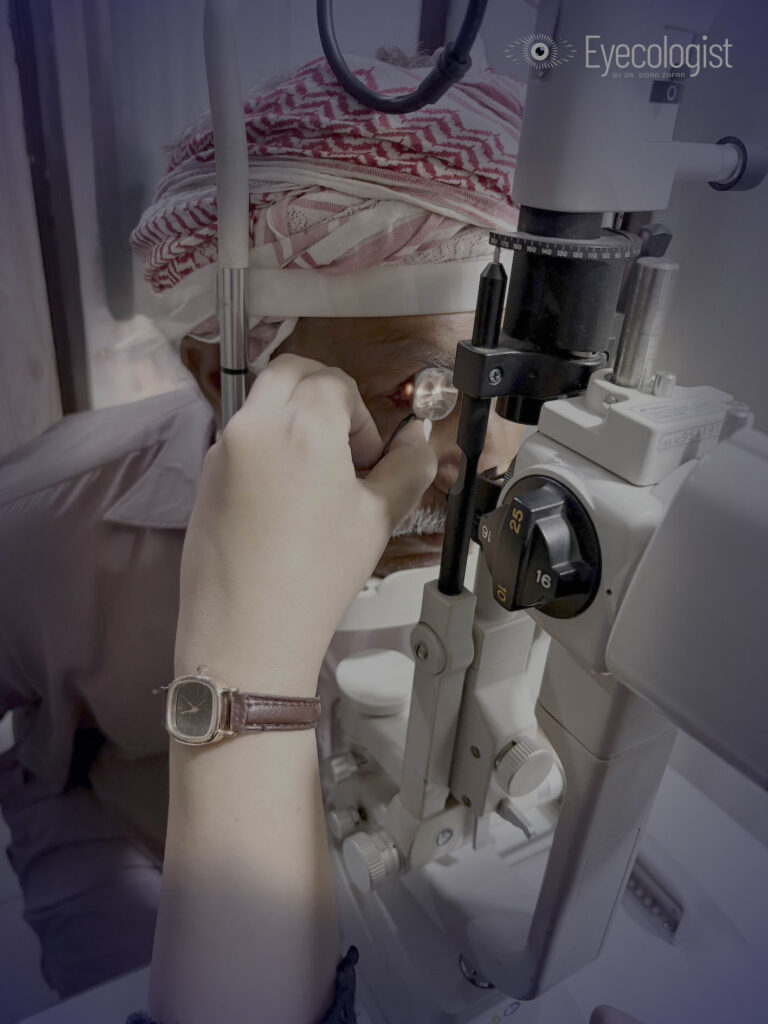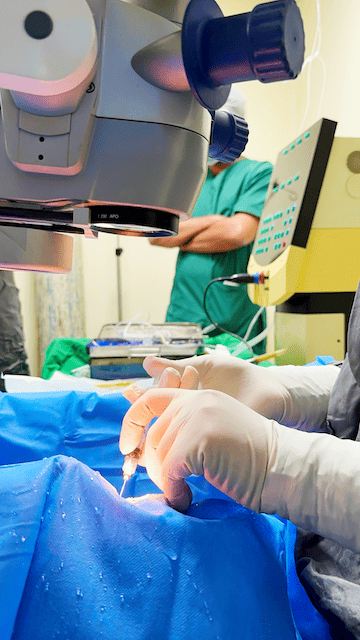Clarity Begins With Awareness
What is Glaucoma?
Glaucoma is an eye disease that occurs due to an increased intraocular pressure. It is one of the most common causes of blindness worldwide.
- Glaucoma is widely known as the ‘silent thief of vision’ and stands as the second leading cause of blindness globally, following cataracts
- As of 2020, around 80 million people across the globe were living with this condition.
- By 2040, that number may grow to over 111 million individuals if awareness and early detection do not improve.
- Asia carries the heaviest burden, with roughly 60% of all glaucoma cases worldwide.
Risk Factors of Glaucoma
Glaucoma does not develop in the same way for everyone; some people are at more risk than others. Certain risk factors can significantly increase the likelihood of this vision-threatening eye disease. Ethnicity also plays a role, as studies show that individuals with darker skin tones tend to face a greater risk compared to those with lighter skin.
Certain factors that contribute to glaucoma include:
- Age: The risk of glaucoma increases steadily after the age of 40, making regular eye check-ups essential.
- Stress and anxiety: These may influence eye pressure and overall eye health, adding to the susceptibility.
- Underlying health conditions: Diabetes, high blood pressure, and cardiovascular problems can raise the likelihood of glaucoma.
- Other risk contributors: Long-term use of steroid medications, severe nearsightedness (myopia), and previous eye injuries.
Different Forms of Glaucoma
There are several types of glaucoma, each affecting the eye differently.
- Open-angle glaucoma, the most common type, develops when fluid drainage within the eye becomes impaired, causing pressure to build gradually.
- Narrow-angle glaucoma is relatively rare but more dangerous. It results from a complete blockage of fluid outflow. Women are more at risk, and sudden obstruction can cause a painful, vision-threatening episode known as a “glaucoma attack.”
- Secondary glaucoma occurs when another condition, such as an eye injury, tumor, vascular occlusion, infection, or complications after cataract surgery, leads to elevated eye pressure. In some cases, medications may also trigger it.
Clarity begins with awareness. Glaucoma can be managed when caught in time.
How is Glaucoma Diagnosed?
Glaucoma is diagnosed through a series of specialized eye tests. The first step is measuring intraocular pressure (eye pressure). Because eye pressure can vary during the day, multiple measurements may be needed to create an accurate pressure profile. Another essential test is visual field examination (perimetry), which detects visual field loss caused by optic nerve damage.
In addition, a detailed fundus examination allows the ophthalmologist to assess the optic nerve and the back of the eye for early signs of glaucoma. Regular eye check-ups and early detection are key to preventing vision loss from this condition.
Glaucoma Emergencies
Glaucoma emergencies, particularly an acute glaucoma attack, demand immediate medical care. During such an episode, intraocular pressure rises dramatically, making the eye firm and painful.
Common symptoms include redness, blurred or hazy vision, and severe discomfort. Some patients may also develop nausea, vomiting, or intense headaches, which are often mistaken for other health problems. However, untreated acute glaucoma can quickly cause irreversible damage to the optic nerve, resulting in permanent blindness.
Recognizing these warning signs and seeking urgent treatment from an ophthalmologist is critical.

How Glaucoma can be Prevented?
Glaucoma often develops silently, but regular eye exams and lifestyle changes can make a lasting difference. Detecting it early prevents serious damage and helps maintain clear, healthy vision.
Adults over 40 should schedule eye checkups every three years, and annually after age 60. Even younger individuals with a history of eye injury should be screened. Beyond checkups, a healthy lifestyle plays a vital role. Avoid smoking, drink plenty of water, and engage in regular physical activity.
Glaucoma Treatment
Glaucoma cannot be cured, but with timely treatment, it can be controlled to protect eyesight. Once detected, therapy must begin immediately and continue throughout life. The most common treatment is medicated eye drops, designed to reduce eye pressure and slow down damage to the optic nerve.
These drops should be taken daily as prescribed, since regular use is crucial to avoid disease progression. Some patients may experience side effects, such as redness, dryness, or mild discomfort, but these are manageable with professional guidance.
Glaucoma Surgery
Glaucoma surgery is often recommended when medications or laser treatments are not enough to control eye pressure. There are several surgical techniques available, and the choice depends on the type and severity of glaucoma. The primary goal of these procedures is to lower intraocular pressure by creating or improving pathways that allow fluid to drain from the eye.
By reducing pressure, surgery helps protect the optic nerve and preserve vision. Like any medical procedure, glaucoma surgery carries potential risks, so it is important to have an open discussion with your eye doctor.
Make an Appointment
Book Your Vision Journey Now

